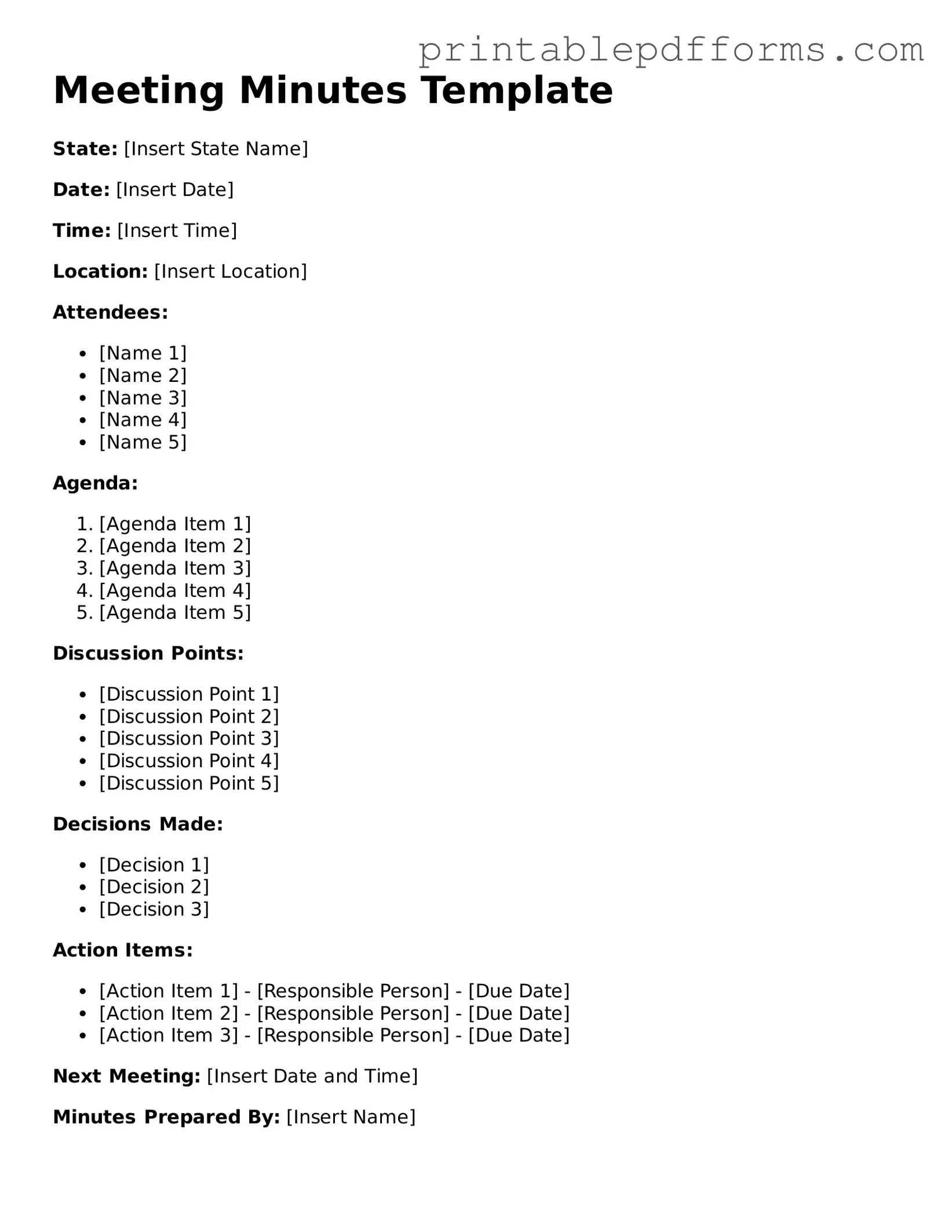What are meeting minutes?
Meeting minutes are a written record of what transpired during a meeting. They capture key discussions, decisions made, and action items assigned to participants. These minutes serve as a reference for attendees and those who could not attend, ensuring everyone is informed about the meeting's outcomes.
Why are meeting minutes important?
Meeting minutes play a crucial role in organizational communication. They help maintain transparency, provide a historical record, and ensure accountability. By documenting decisions and action items, minutes help participants remember their commitments and the overall direction of projects.
Who is responsible for taking meeting minutes?
Typically, the responsibility of taking meeting minutes falls to a designated individual, often referred to as the secretary or minute-taker. This person should be attentive and organized, ensuring that all important details are accurately recorded during the meeting.
What should be included in meeting minutes?
Effective meeting minutes should include:
-
Date and time of the meeting
-
Names of attendees and absentees
-
A brief overview of the agenda
-
Key discussion points
-
Decisions made
-
Action items with assigned responsibilities
-
Next meeting date, if applicable
While there is no strict format for meeting minutes, they should be clear and easy to read. A common approach is to use bullet points or numbered lists for clarity. Headings can help organize sections, and using consistent language throughout will enhance readability.
When should meeting minutes be distributed?
Distributing meeting minutes promptly is essential. Ideally, they should be shared within a few days after the meeting. This ensures that all participants can recall discussions and follow up on action items while the information is still fresh in their minds.
Can meeting minutes be amended after distribution?
Yes, meeting minutes can be amended. If errors or omissions are discovered after distribution, they should be corrected and redistributed. It's important to note any changes in the next meeting’s minutes to maintain an accurate record.
Are meeting minutes legally binding?
Meeting minutes can serve as a legal record of decisions made, especially in formal organizations. However, their binding nature often depends on the context and specific regulations governing the organization. It’s advisable to consult with legal counsel if there are concerns about the legal implications of meeting minutes.
How long should meeting minutes be kept?
The retention period for meeting minutes varies by organization and industry. Generally, it’s recommended to keep them for at least a few years. Some organizations may have specific policies regarding document retention, so it's essential to check those guidelines.
What if I missed a meeting? Can I still access the minutes?
Yes, if you missed a meeting, you can typically access the minutes through your organization’s communication channels. Many companies maintain a shared drive or an intranet where meeting minutes are stored. If you have trouble finding them, don’t hesitate to ask the minute-taker or your colleagues for assistance.
